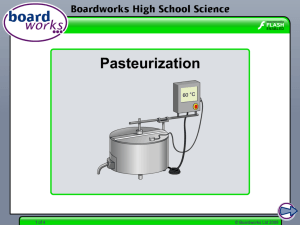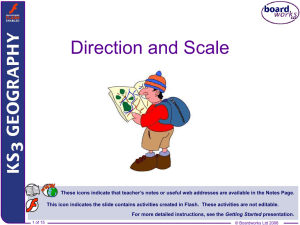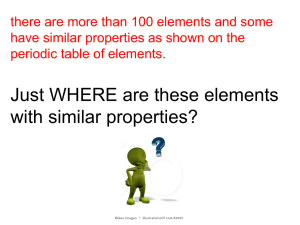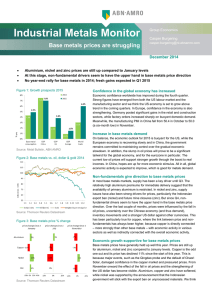Metals
advertisement
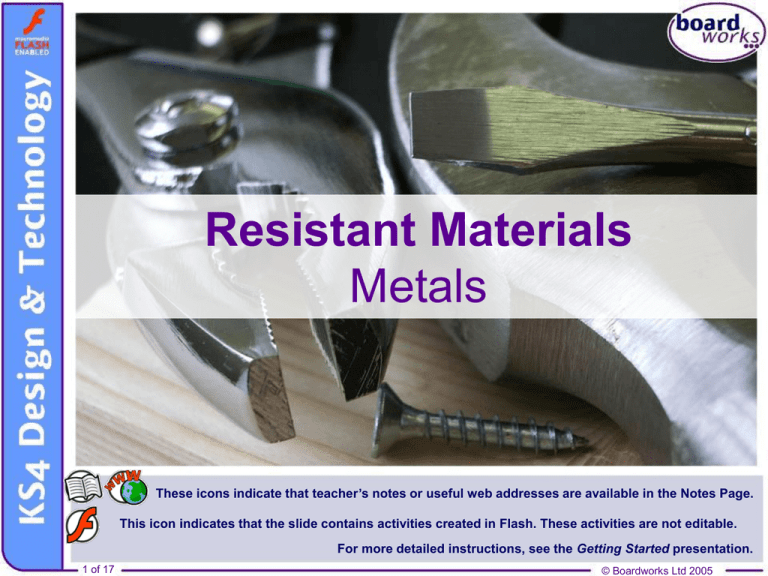
Resistant Materials Metals These icons indicate that teacher’s notes or useful web addresses are available in the Notes Page. This icon indicates that the slide contains activities created in Flash. These activities are not editable. For more detailed instructions, see the Getting Started presentation. 1 of 17 © Boardworks Ltd 2005 Learning objectives Learning objectives To know where metals come from and how they are obtained. To understand the differences between, and properties of, ferrous and non-ferrous metals and alloys. To understand how the properties of different metals make them suitable for different uses. To know how the properties of metals can be altered by heating. 2 of 17 © Boardworks Ltd 2005 Where do metals come from? Metals are part of the earth’s crust. Economic, chemical and technological problems have to be solved to obtain them. How desirable a metal is often depends on how scarce it is. Gold diggers dig up tonnes to obtain a few grams, whereas there is so much iron that materials technologists are only interested if they can obtain hundreds of kilograms from each tonne of ore. 3 of 17 © Boardworks Ltd 2005 Where do metals come from? Pure metals like copper form part of the earth’s crust as metal ore. Copper ore is mined, then washed to remove other minerals and unwanted materials. It is heated in a furnace and the molten copper is run off. This process is known as smelting. 4 of 17 © Boardworks Ltd 2005 Extracting metals – smelting 5 of 17 © Boardworks Ltd 2005 Extracting metals – electrolysis Aluminium is the most plentiful metal found in the earth’s crust, and is in high demand because it is both light and strong. Aluminium is extracted from aluminium oxide (bauxite) by electrolysis. Electricity passes between the electrodes and pure aluminium forms at the cathode. carbon anode cathode lining molten aluminium metal 6 of 17 © Boardworks Ltd 2005 Ferrous and non-ferrous metals Metals can be classified into three groups: ferrous metals, non-ferrous metals and alloys. Ferrous metals are metals which contain iron. They will corrode if unprotected. Ferrous metals will be attracted by a magnet. Non-ferrous are metals which do not contain iron. Pure metals such as aluminium, copper, tin and lead are nonferrous, and do not rust. Alloys are metals which are a mixture of two or more metals, benefiting from the properties of both. For example, brass is an alloy of copper and zinc. 7 of 17 © Boardworks Ltd 2005 Types of metals 8 of 17 © Boardworks Ltd 2005 Examples of ferrous metals 9 of 17 © Boardworks Ltd 2005 Non-ferrous metals 10 of 17 © Boardworks Ltd 2005 Examples of alloys 11 of 17 © Boardworks Ltd 2005 Random alloy generator 12 of 17 © Boardworks Ltd 2005 Heat treatment – annealing 13 of 17 © Boardworks Ltd 2005 Heat treatment – hardening steel 14 of 17 © Boardworks Ltd 2005 Heat treatment – tempering 15 of 17 © Boardworks Ltd 2005 Market forms of metals Metals are commercially available in a range of stock shapes and sizes. flat strip round rod round tube square rod hexagonal rod octagonal rod 16 of 17 square tube sheet angle channel © Boardworks Ltd 2005 Key points Key points Metals are extracted from the earth’s crust. Iron ore is smelted to obtain iron, while aluminium is obtained by electrolysis. Ferrous metals come from iron ore and include cast iron and steel. Non-ferrous metals include aluminium, copper and tin. Alloys such as brass and stainless steel are formed from two or more metals and other elements. Heating metals alters their properties. Annealing involves heating a metal and then allowing it to cool, which makes the metal more workable. Tempering steel makes it less brittle. 17 of 17 © Boardworks Ltd 2005

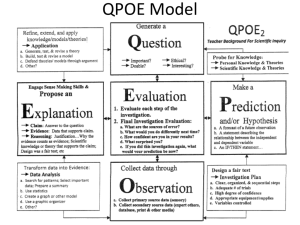
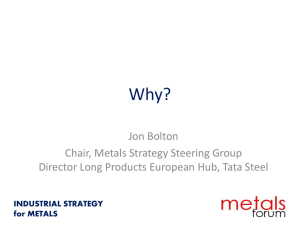
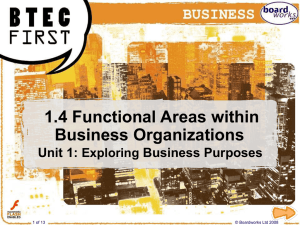

![Direction_and_Scale[1]](http://s2.studylib.net/store/data/005432475_1-80ce3065f13008250a8cdec135db9846-300x300.png)
